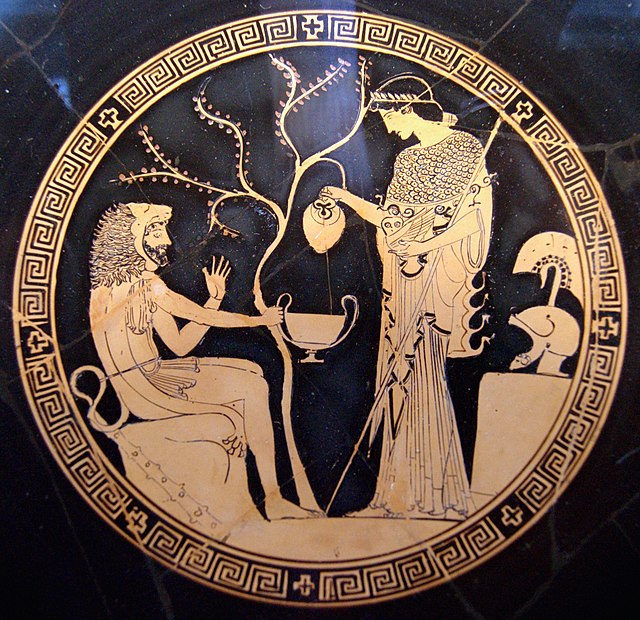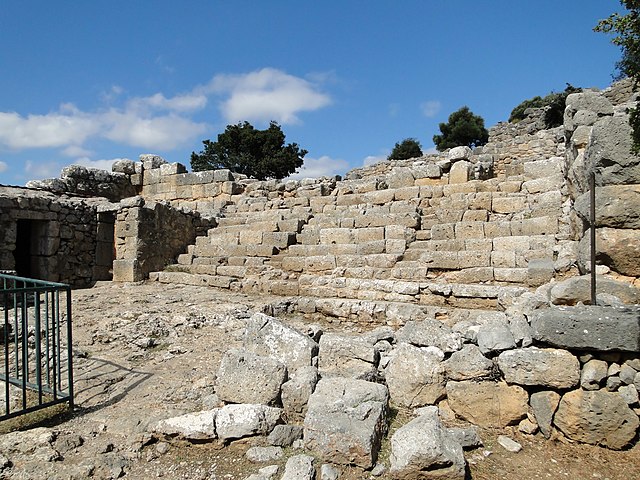The Dorian invasion is a concept devised by historians of Ancient Greece to explain the replacement of pre-classical dialects and traditions in Southern Greece by the ones that prevailed in Classical Greece. The latter were named "Dorian" by the ancient Greek writers, after the Dorians, the historical population that spoke them.
Heracles and Athena, an Attic red-figure vase
6th-century BC cup from Laconia, the center of the classical Dorians, representing Nike, the goddess of victory, attending upon a Spartan warrior
A record of Pylos, preserved by baking in the fire that destroyed the palace about 1200 BC, according to the excavator, Carl Blegen. The record must date to about 1200 BC, as the unbaked clay, used mainly for diurnal or other short-term records, would soon have disintegrated.
Athenian proto-geometric pottery
The Dorians were one of the four major ethnic groups into which the Hellenes of Classical Greece divided themselves. They are almost always referred to as just "the Dorians", as they are called in the earliest literary mention of them in the Odyssey, where they already can be found inhabiting the island of Crete.
Dorian site of Lato on the island of Crete
Uplands of Greece - the Pindus Mountains
Fifth century BC hoplite, or "heavy-armed soldier", possibly the Spartan king Leonidas, a Dorian, who died holding the pass at the Battle of Thermopylae.
Peloponnesus. Sparta was in the valley of the lowermost bay.








